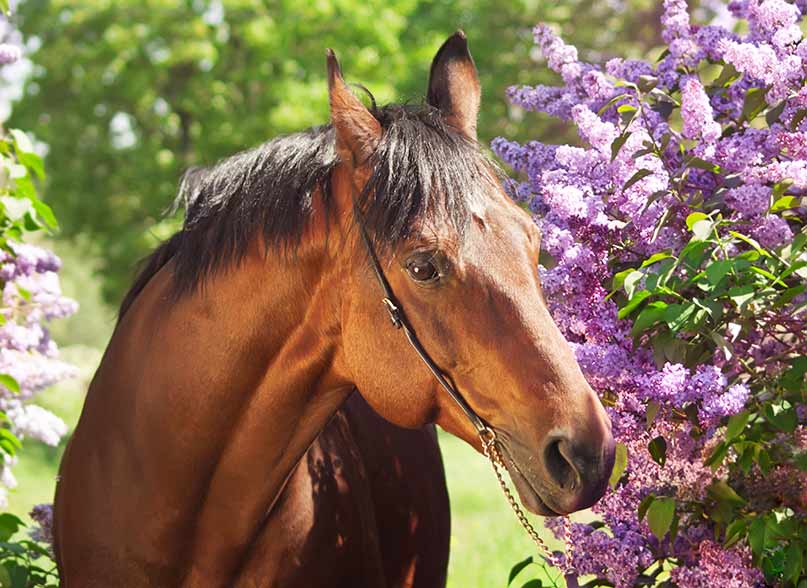
Sometimes when we let our horses out to pasture, it can be hard to eliminate all potentially fatal plants that can harm our horses once digested. Here at Petplan, we have created a list of some of the most harmful plants in Australia for your horse to digest???
- Bracken Fern: It is a perennial fern with triangular leaves that can reach two or three feet high. It is commonly found in open forest in most temperate areas of Australia. The Bracken Fern is harmful as it contains thiaminase which inhibits the absorption of vitamin B1 ??? this is necessary for nerve function and deficiencies can lead to neurological impairment. Small amounts of this plant are relatively nontoxic, although horses tend to gain a taste for it and will seek it out which can eventually lead to the over indulgence of the plant leading to problems. If your horse is found to have consumed a large amount, you can stop the effects of the plant with large doses of vitamin B1 over the course of a couple of weeks.??

- Hemlock: is a multi-stemmed weed with toothed, fern like leaves and clusters of small white flowers. It is most common in the coastal and sub-coastal parts of Australia. The leaves, stems, and seeds of the Hemlock contain several neurotoxins that affect both the central and peripheral nervous system. A lethal dose is around 2-3kgs, however it is mostly avoided by animals. There is no current treatment, although if smaller doses are consumed, the horse can be nursed back to health.??

- Johnson grass: is a coarse-stemmed grass with broad, veined leaves that can grow almost 2 metres high. It is relatively common throughout the coastal and sub coastal areas of Australia. The plant contains a cyanide compound which can inhibit a horse???s ability to absorb oxygen ??? eventually suffocating the animal. Grazing on the adult plant is unlikely to harm the horse, it is most harmful when it is a young plant or it is damaged due to trampling, wilting or frost (allowing the cyanide to be chemically liberated). For less severe cyanide poisoning, supportive drug therapy can be effective.??

- Oleander: is a common household plant in Australia that has elongated, thick leathery leaves that can grow to 10 inches long. The flowers grow at large clusters on the end of the branches are either pink or red. All parts of the Oleander are toxic which can disrupt the beating of the heart and about 30 to 40 leaves can be deadly for a horse. Horses are able to survive if treated early via anti-arrhythmic drugs to stabilise the heart and activated charcoal to inhibit further toxin absorption.??

- Yellow star thistle: is an annual weed that has a single base stem which forms a spherical plant up to a metre tall. It has round yellow flowers surrounded by stiff spines. It is most common across the wheat belt of Australia, ranging from WA to NSW but can be found in other regions. It contains a toxic agent that has a neurological effect on the brain that inhibits the nerves and control chewing. A harmful amount for a horse is around 50-200% of their body weight consumed over a 3 month period. There is currently no treatment and all damage is permanent.

These are only some of the harmful plants that can be found in Australia with many other region specific plants able to cause serious (if not fatal) effects. If you are worried about a certain plant, ask your local equine vet for their expert opinion.


